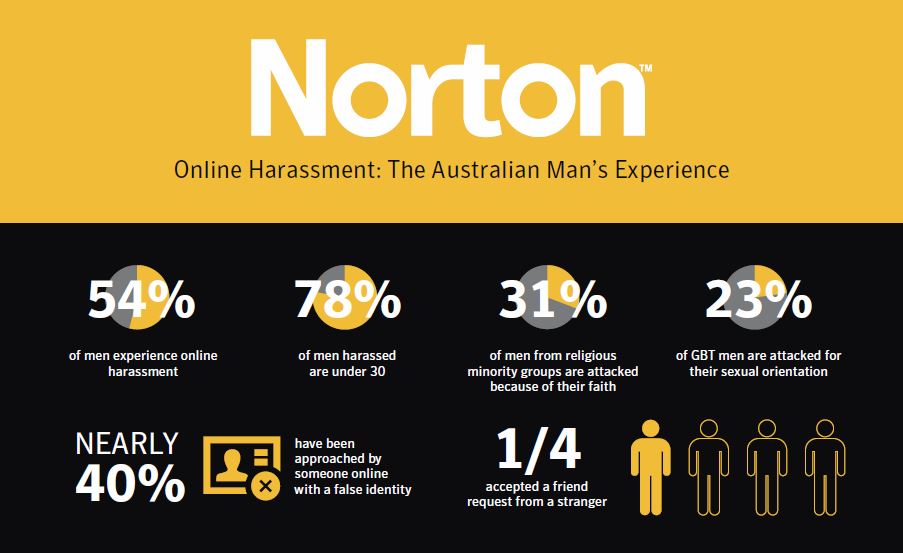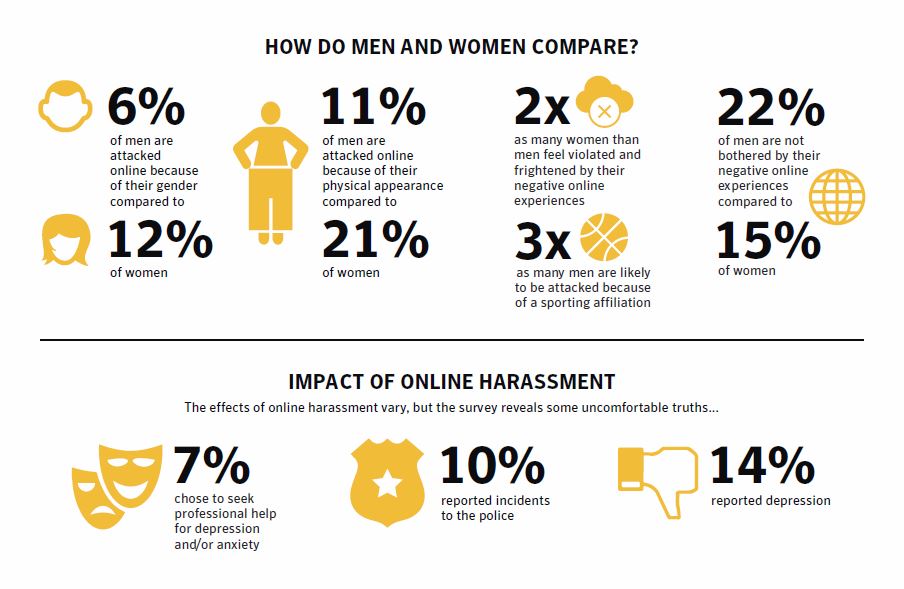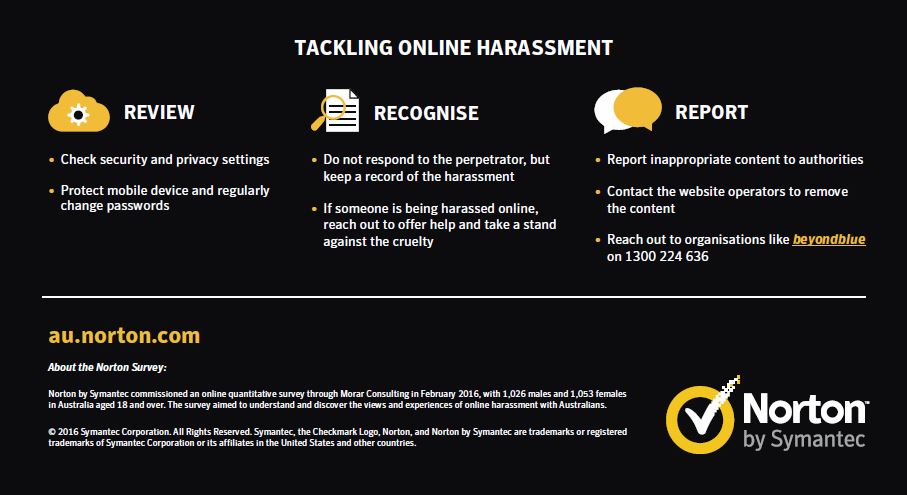Mark Gorrie Interview (Director, Norton Business Unit, Pacific Region) … on online harassment
We interview Mark Gorrie (Director, Norton Business Unit, Pacific Region) about their latest survey on online harassment with some very interesting results, particularly for males being harassed online. Their sample survey included over 1,000 Australian adult males which included the impact of online harassment, motives for online harassment and the emotional toll of online harassment to name a few of the themes. The Norton research reveals that more than three quarters (78 percent) of Australian men under 30, and more than half of all Australian men (54 percent), have experienced some form of online harassment.
Where you surprised at the number of men harassed online?
Yes, we weren’t expecting the incidence of online harassment to be so high with men. It’s clear that this is an issue that affects both genders, and in particular, minority groups.
How did Symantec pick their sample?
Norton by Symantec commissioned an online quantitative survey through Morar Consulting in February 2016, with 1,026 males and 1,053 females in Australia aged 18 and over. The survey aimed to understand and discover the views and experiences of online harassment with Australian men and women. This new survey is an extension of Norton’s Online Harassment and the Australian Women’s Experience research launched earlier this year. These studies reiterate Norton’s commitment to bringing the real impacts of online harassment across both genders to the forefront of the national agenda.
Do you think social media is the key reason for this number?
The most common forms of online harassment that Australian men are experiencing range from abuse and insults (30 percent), trolling and malicious gossip (29 percent) as well as rumour-mongering (27 percent) – these types of attacks typically do take place on social media platforms, but are not exclusive to them.
In the report, you mention that 38% of perpetrators are anonymous, do you feel Twitter is the primary platform of abuse?
The report found that while 38% of perpetrators are unknown/anonymous, the remaining attacks came from another male (15 percent) former friends (12 percent), or comments from teenagers or acquaintances (11 percent) respectively. There is no primary platform for abuse online – the report found that online harassment occurred on most social media platforms, online forums and online gaming sites.
What was your biggest surprise in the report?
I like to think that as Aussies we have a ‘can do attitude,’ but the Norton study actually found that Australian men are applying a “she’ll be right attitude” to online harassment and are essentially choosing to ignore the problem (41 percent). This attitude presents part of the problem. We need to tackle this issue collectively – using the appropriate channels (reporting the problem to the appropriate authorities and website owners), in order to abate the problem.
Most disturbing?
The Norton survey reveals there are some risk factors that make some men more vulnerable to online harassment than their other male counterparts. Men from minority religious beliefs are attacked because of their faith in 31 percent of cases; gay, bisexual and transgender men are targeted because of their sexual orientation in 23 percent of cases, compared with seven percent of heterosexual men; and men with disabilities are attacked because of their physical or intellectual disabilities in 14 percent of cases.
How can men protect themselves online?
At Norton, we encourage people to do three things:
- REVIEW your online presence. Check your security and privacy settings on all devices and regularly change passwords.
- RECOGNISE the problem if it happens and move quickly. Do not respond to the perpetrator keep all records of the harassment and if you are witness to online harassment, offer support.
- REPORT online harassment to the relevant authorities immediately. If inappropriate content is displayed online, contact the website operators and request that the content is removed. If the emotional impact of online harassment takes its toll on your wellbeing or that of someone you care for, please reach out to organisations such as beyondblue.
Do you think in the future, we will be able to protect everyone better?
Given the social element of online harassment, we will never be able to control the actions of the perpetrators. What we can do, is highlight the impact this issue is having and raise awareness on steps you can take to tackle the problem. Online harassment can have a long impact on people, that’s why it’s part of Norton’s mission to keep people safe and secure online.
What recommendations would you make to governments?
When it comes to online harassment, law enforcement and government agencies are playing catch-up and really struggling to deal with the prevalence of online harassment. In some cases, it can be very difficult for police to determine how to investigate online harassment, particularly if the person is in another country or if there are numerous trolls attacking an individual. Online harassment education efforts for law enforcement officials and governments is in desperate need as more and more people resort to law enforcement agencies to help them out.
For more information on the report, please visit https://www.impulsegamer.com/norton-study-reveals-half-australian-men-experience-online-harassment/










